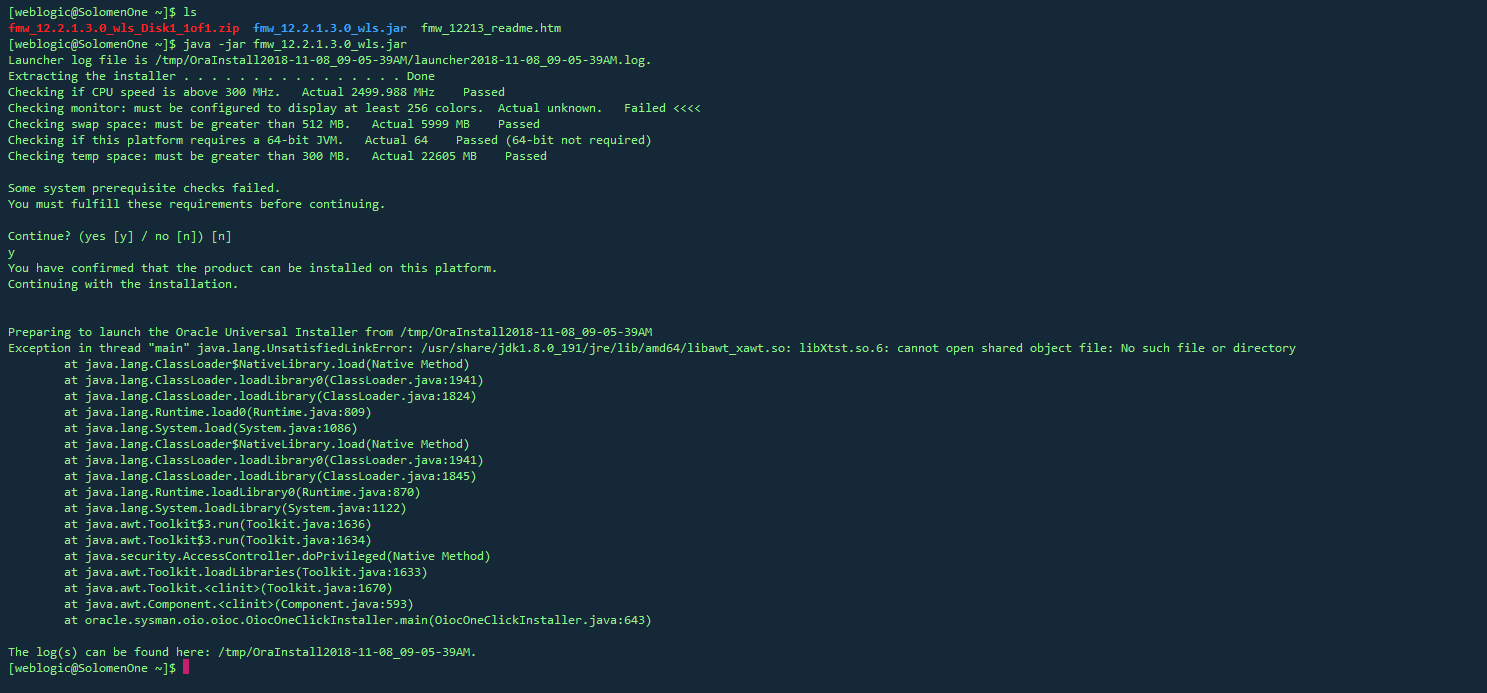How to uninstall / completely remove Oracle 11g (client)?
deinstall.bat doesn\'t work.
Edit: Further discussion related to why this question was closed and deleted: https://meta.stackexchange.com/questions/190441/why-was-this-question-related-to-uninstalling-the-oracle-database-client-deleted
Assuming a Windows installation, do please refer to this:
http://www.oracle-base.com/articles/misc/ManualOracleUninstall.php
- Uninstall all Oracle components using the Oracle Universal Installer (OUI).
- Run regedit.exe and delete the HKEY_LOCAL_MACHINE\\SOFTWARE\\ORACLE key. This contains registry entires for all Oracle products.
- Delete any references to Oracle services left behind in the following part of the registry:
HKEY_LOCAL_MACHINE\\SYSTEM\\CurrentControlSet\\Services\\Ora* It should
be pretty obvious which ones relate to Oracle.
- Reboot your machine.
- Delete the \"C:\\Oracle\" directory, or whatever directory is your ORACLE_BASE.
- Delete the \"C:\\Program Files\\Oracle\" directory.
- Empty the contents of your \"C:\\temp\" directory.
- Empty your recycle bin.
Calling additional attention to some great comments that were left here:
- Be careful when following anything listed here (above or below), as doing so may remove or damage any other Oracle-installed products.
- For 64-bit Windows (x64), you need also to delete the
HKEY_LOCAL_MACHINE\\SOFTWARE\\Wow6432Node\\ORACLE key from the registry.
- Clean-up by removing any related shortcuts that were installed to the Start Menu.
- Clean-up environment variables:
- Consider removing
%ORACLE_HOME%.
- Remove any paths no longer needed from
%PATH%.
This set of instructions happens to match an almost identical process that I had reverse-engineered myself over the years after a few messed-up Oracle installs, and has almost always met the need.
Note that even if the OUI is no longer available or doesn\'t work, simply following the remaining steps should still be sufficient.
(Revision #7 reverted as to not misquote the original source, and to not remove credit to the other comments that contributed to the answer. Further edits are appreciated (and then please remove this comment), if a way can be found to maintain these considerations.)
There are some more actions you should consider:
Remove Registry Entries for MS Distributed Transaction Coordinator (MSDTC)
Note: on the Internet I found this step only at a single (private) page. I don\'t know if it is required/working or if it breaks anything on your PC.
- Open Regedit
- Navigate to
HKEY_LOCAL_MACHINE\\Software\\Microsoft\\MSDTC\\MTxOCI
- Add an x before each string for
OracleOciLib, OracleSqlLib, and OracleXaLib
- Navigate to
HKEY_LOCAL_MACHINE\\Software\\Wow6432Node\\Microsoft\\MSDTC\\MTxOCI
- Add an x before each string for
OracleOciLib, OracleSqlLib, and OracleXaLib
Otherwise these files, if they exist, will still be in use next time you reboot, and unable to be deleted.
Remove environment variable ORACLE_HOME, ORACLE_BASE, TNS_ADMIN, NLS_LANG if exist
Check also Oracle doc to find all Oracle related environment variables, however apart from variables listed above they are very rarely used on Windows Client: Oracle Environment Variables
Unregister oci.dll
- Open a command line window (Start Menu -> Run... -> cmd)
Enter regsvr32 /u oci.dll, resp. %windir%\\SysWOW64\\regsvr32 /u oci.dll
In some cases the file %ORACLE_HOME%\\bin\\oci.dll is looked and you cannot delete it. In such case rename the file (e.g. to oci.dll.x) and reboot the PC, afterwards you can delete it.
Remove Oracle .NET assemblies from Global Assembly Cache (GAC). You do this typically with the gacutil utility, if available on your system. Would be like this:
gacutil /u Policy.10.1.Oracle.DataAccess
gacutil /u Policy.10.2.Oracle.DataAccess
gacutil /u Policy.1.102.Oracle.DataAccess
gacutil /u Policy.1.111.Oracle.DataAccess
gacutil /u Policy.2.102.Oracle.DataAccess
gacutil /u Policy.2.111.Oracle.DataAccess
gacutil /u Policy.2.112.Oracle.DataAccess
gacutil /u Policy.2.121.Oracle.DataAccess
gacutil /u Policy.2.122.Oracle.DataAccess
gacutil /u Policy.4.112.Oracle.DataAccess
gacutil /u Policy.4.121.Oracle.DataAccess
gacutil /u Policy.4.122.Oracle.DataAccess
gacutil /u Oracle.DataAccess
gacutil /u Oracle.DataAccess.resources
gacutil /u Policy.4.121.Oracle.ManagedDataAccess
gacutil /u Policy.4.122.Oracle.ManagedDataAccess
gacutil /u Oracle.ManagedDataAccess
gacutil /u Oracle.ManagedDataAccess.resources
gacutil /u Oracle.ManagedDataAccessDTC
gacutil /u Oracle.ManagedDataAccessIOP
gacutil /u Oracle.ManagedDataAccess.EntityFramework
Entry System.Data.OracleClient should not be removed, this one is installed by Microsoft - not an Oracle component!
Instead of gacutil /u ... you can also use OraProvCfg /action:ungac /providerpath:... if OraProvCfg is still available on your system. You may find it at %ORACLE_HOME%\\odp.net\\managed\\x64\\OraProvCfg.exe.
With a text editor, open XML Config file %SYSTEMROOT%\\Microsoft.NET\\Framework64\\v4.0.30319\\Config\\machine.config and delete branch <oracle.manageddataaccess.client>, if existing.
Instead of editing the XML Config file manually you can also run (if OraProvCfg.exe is still available on your system):
%ORACLE_HOME%\\odp.net\\managed\\x64\\OraProvCfg.exe /action:unconfig /product:odpm /frameworkversion:v4.0.30319
%ORACLE_HOME%\\odp.net\\managed\\x86\\OraProvCfg.exe /action:unconfig /product:odpm /frameworkversion:v4.0.30319
%ORACLE_HOME%\\odp.net\\managed\\x64\\OraProvCfg.exe /action:unconfig /product:odp /frameworkversion:v4.0.30319
%ORACLE_HOME%\\odp.net\\managed\\x86\\OraProvCfg.exe /action:unconfig /product:odp /frameworkversion:v4.0.30319
Check following Registry Keys and delete them if existing
HKLM\\SOFTWARE\\Wow6432Node\\Microsoft\\.NETFramework\\v2.0.50727\\AssemblyFoldersEx\\ODP.Net
HKLM\\SOFTWARE\\Wow6432Node\\Microsoft\\.NETFramework\\v4.0.30319\\AssemblyFoldersEx\\ODP.Net
HKLM\\SOFTWARE\\Wow6432Node\\Microsoft\\.NETFramework\\v4.0.30319\\AssemblyFoldersEx\\Oracle.ManagedDataAccess
HKLM\\SOFTWARE\\Wow6432Node\\Microsoft\\.NETFramework\\v4.0.30319\\AssemblyFoldersEx\\Oracle.ManagedDataAccess.EntityFramework6
HKLM\\SOFTWARE\\Wow6432Node\\Microsoft\\.NETFramework\\v4.0.30319\\AssemblyFoldersEx\\odp.net.managed
HKLM\\SOFTWARE\\Wow6432Node\\Microsoft\\.NETFramework\\v4.0.30319\\AssemblyFoldersEx\\Oracle.DataAccess.EntityFramework6\\
HKLM\\SOFTWARE\\Microsoft\\.NETFramework\\v2.0.50727\\AssemblyFoldersEx\\ODP.Net
HKLM\\SOFTWARE\\Microsoft\\.NETFramework\\v4.0.30319\\AssemblyFoldersEx\\ODP.Net
HKLM\\SOFTWARE\\Microsoft\\.NETFramework\\v4.0.30319\\AssemblyFoldersEx\\Oracle.ManagedDataAccess
HKLM\\SOFTWARE\\Microsoft\\.NETFramework\\v4.0.30319\\AssemblyFoldersEx\\Oracle.ManagedDataAccess.EntityFramework6
HKLM\\SOFTWARE\\Microsoft\\.NETFramework\\v4.0.30319\\AssemblyFoldersEx\\odp.net.managed
HKLM\\SOFTWARE\\Microsoft\\.NETFramework\\v4.0.30319\\AssemblyFoldersEx\\Oracle.DataAccess.EntityFramework6\\
HKLM\\SYSTEM\\CurrentControlSet\\Services\\EventLog\\Application\\Oracle Data Provider for .NET, Managed Driver
HKLM\\SYSTEM\\CurrentControlSet\\Services\\EventLog\\Application\\Oracle Data Provider for .NET, Unmanaged Driver
HKLM\\SYSTEM\\CurrentControlSet\\Services\\EventLog\\Application\\Oracle Provider for OLE DB
Delete the Inventory folder, typically C:\\Program Files\\Oracle\\Inventory and C:\\Program Files (x86)\\Oracle\\Inventory
Delete temp folders %TEMP%\\deinstall\\, %TEMP%\\OraInstall\\ and %TEMP%\\CVU* (e.g %TEMP%\\CVU_11.1.0.2.0_domscheit) if existing.
Do everything suggested by ziesemer.
You may also want to remove from the registry:
HKEY_LOCAL_MACHINE\\SOFTWARE\\ODBC\\ODBCINST.INI\\<any Ora* drivers> keys
HKEY_LOCAL_MACHINE\\SOFTWARE\\ODBC\\ODBCINST.INI\\ODBC Drivers<any Ora* driver> values
So they no longer appear in the \"ODBC Drivers that are installed on your system\" in ODBC Data Source Administrator
Do everything suggested by ziesemer.
You may also want to :
- Stop the Oracle-related services (before deleting them from the
registry).
- In the registry, look not only for entries named \"Oracle\"
but also e.g. for \"ODP\".


